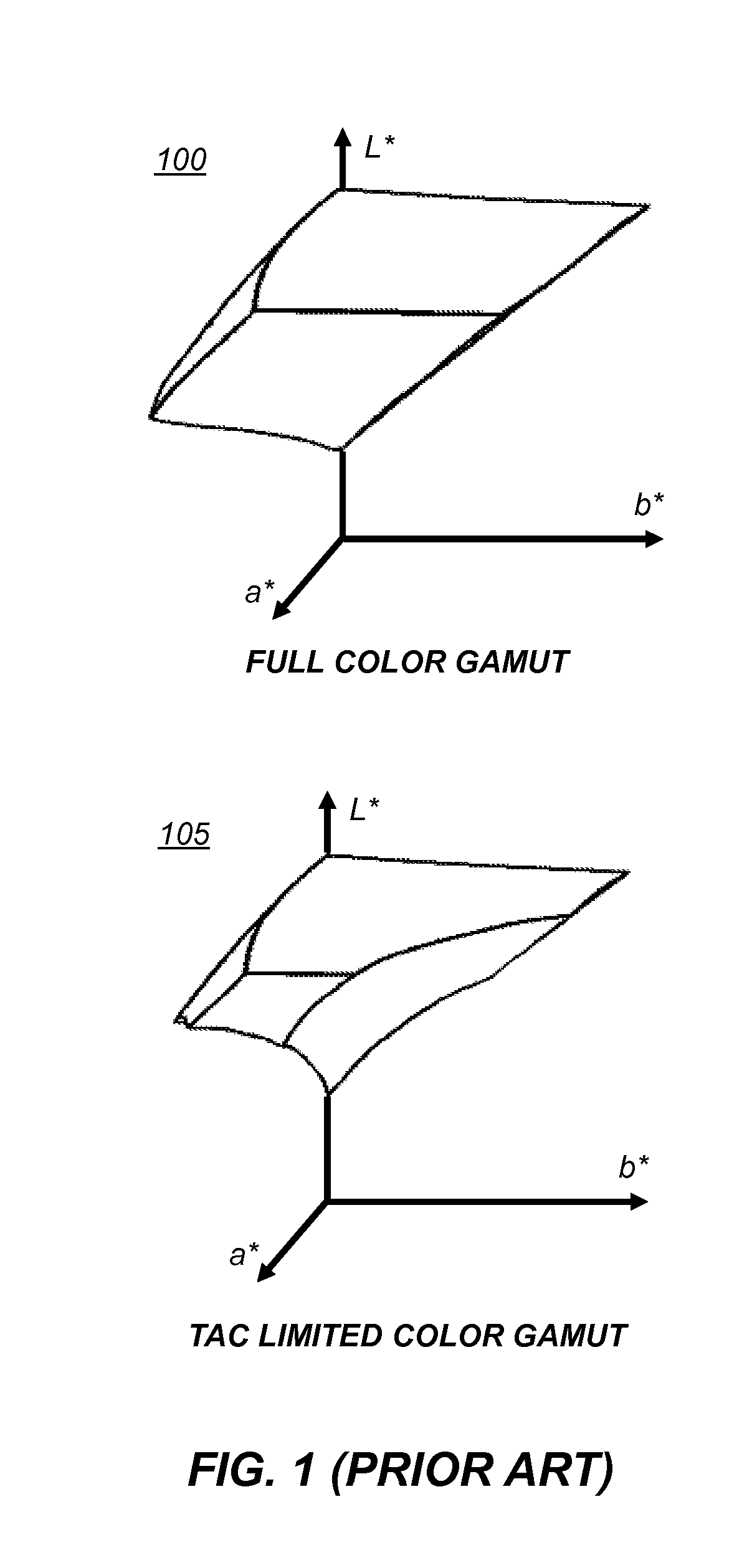Ink reduction method
- Summary
- Abstract
- Description
- Claims
- Application Information
AI Technical Summary
Benefits of technology
Problems solved by technology
Method used
Image
Examples
second embodiment
[0076]FIG. 6B shows additional details for the create inverse transform step 415 according to a In this embodiment, the colorant load limit 325 is used as a constraint on the average colorant load, specifying a maximum average colorant load that can be printed given an input color distribution 665. This reflects the fact that often the factors that make it necessary to limit the colorant load are more a function of the average amount of colorant deposited across the printed image rather than the maximum colorant load that is produced for specific input color values. For example, wrinkle artifacts or smear artifacts can be produced on continuous inkjet printing systems if the average colorant load is too high even if no image artifacts are produced for local image regions having a high colorant load. In this case, the average colorant load limit will generally be a function of the type of receiver (e.g., paper) used in the color printing system. In other cases, the specification of ...
third embodiment
[0100]FIG. 6C shows additional details for the create inverse transform step 415 according to a In this embodiment, the colorant load limit 325 is used as a TAC limit as in the embodiment of FIG. 6A, specifying a maximum total colorant load that can be printed for any input color.
[0101]As discussed earlier, the imposition of a very low TAC limit can result in severely concave TAC-limited gamuts as shown in FIG. 7A, which can result in objectionable image artifacts. In order to avoid these artifacts, the embodiment shown in FIG. 6C uses a transformation function 705 to transform the native printing system model 410. In some embodiments, the transformation function 705 limits the maximum native colorant control values (e.g., C″M″Y″K″) that are used to print input images. For example, FIG. 8 shows plots of a series of transformation functions 705 where the native colorant control values are modified using scale factors to impose a series of maximum native colorant control value. In th...
PUM
 Login to View More
Login to View More Abstract
Description
Claims
Application Information
 Login to View More
Login to View More - R&D
- Intellectual Property
- Life Sciences
- Materials
- Tech Scout
- Unparalleled Data Quality
- Higher Quality Content
- 60% Fewer Hallucinations
Browse by: Latest US Patents, China's latest patents, Technical Efficacy Thesaurus, Application Domain, Technology Topic, Popular Technical Reports.
© 2025 PatSnap. All rights reserved.Legal|Privacy policy|Modern Slavery Act Transparency Statement|Sitemap|About US| Contact US: help@patsnap.com



